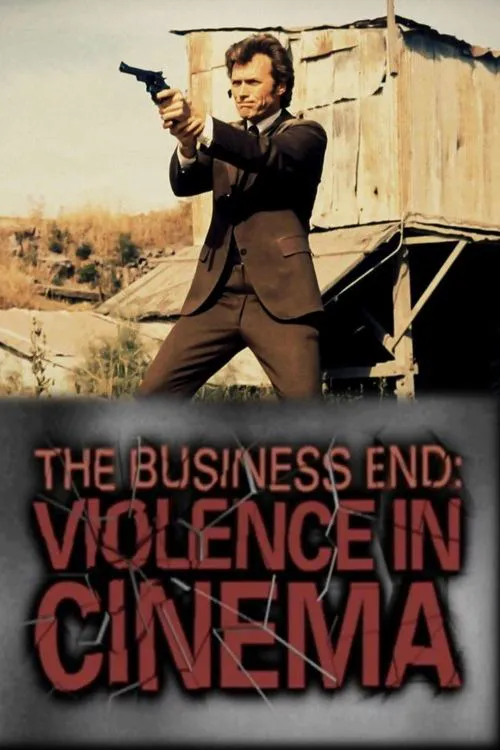The Business End: Violence in Cinema

Plot
The film "The Business End: Violence in Cinema" delves into the contentious topic of violence in movies and its impact on viewers. The documentary sets out to explore the ongoing debate surrounding this issue by examining its roots, exploring its influence on the film industry, and examining the consequences for its audience. The documentary begins by setting the scene, establishing the history of cinematic violence, which spans back to the early days of cinema. Interviews with film historians reveal the early days of silent film, where a scene would occasionally feature a 'sword fight' with 'blood' painted red on the actors' blades, and later, with the advent of sound, the first 'talkies' brought with them a new realism that increased audience immersion, making graphic violence more impactful and thus more prevalent in films. This gradual escalation laid the groundwork for the graphic and often gratuitous violence that has become a staple of contemporary cinema. The Business End also touches on the influence of influential filmmakers, such as the iconic French New Wave director, Jean-Luc Godard, who experimented with the medium, pushing the boundaries of what was acceptable on screen. The New Wave movement's emphasis on art-house cinema sparked a creative explosion that led to a period of heightened experimentation in the 1960s and 1970s, where many notable directors tested the limits of cinematic representation. As the documentary progresses, it moves on to examine the commercial pressures that drive the film industry's decision to include graphic violence in many films. Hollywood executives have repeatedly cited the success of big-budget, high-octane action films as evidence that audiences crave this type of content. Industry insiders reveal the business side of violence in cinema, highlighting how major studios often opt for the most profitable, and often most violent, films to compete in a crowded marketplace. These findings fuel the film's central argument that the industry's focus on commercial success has created a culture of violence that permeates the screen. However, The Business End also presents a critical examination of the effects of movie violence on its viewers. Research and expert testimony illustrate how repeated exposure to screen violence can have a profound impact on viewers' attitudes and behaviors. A study conducted on children who witnessed violent films showed a significant increase in aggressive behavior in those exposed to high levels of on-screen violence. Conversely, the film also raises the issue of escapism, suggesting that viewers may seek out graphic content as a way to momentarily disconnect from their problems. This debate highlights the complexity of the relationship between movie violence and audience influence and underscores the need for responsible filmmaking and viewer awareness. Furthermore, The Business End examines the controversy surrounding the 'copycat effect,' which argues that immitating on screen violence could lead to real-world violence. The film delves deep into this theory, highlighting examples such as the notorious incident at Columbine High School in 1999, and exploring the notion that graphic depictions of violence in films might inspire vulnerable individuals to replicate it. In response to critics who argue that some violence in films has social value or educational benefit, The Business End presents a nuanced perspective. Filmmakers such as Quentin Tarantino argue that graphic violence can be used as a powerful tool for conveying complex themes, challenging societal norms, or providing commentary on contemporary issues. Critics point out, however, that the line between artistic intention and gratuitous violence can be blurry, making it challenging for audiences to distinguish between the two. The documentary concludes by underscoring the need for a more informed public discourse on movie violence. As consumers become increasingly aware of the content they consume, they are empowered to make more informed viewing choices. Furthermore, the film suggests that filmmakers must take greater responsibility for the impact of their work on their audience, using their creative platform to promote thoughtful storytelling that does not prioritize shock value over artistic integrity. Ultimately, The Business End encourages viewers to reevaluate their relationship with cinematic violence. As the film comes to a close, viewers are left to ponder the nature of their connection to the images they've seen on screen and the impact those images may have on their own lives and the world around them.
Ulasan
Rekomendasi



